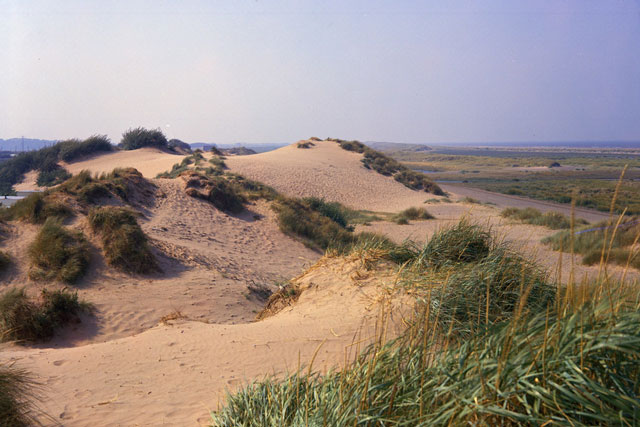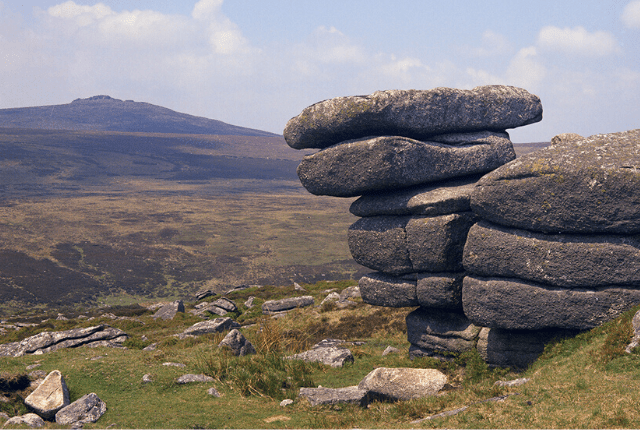Erosion is a process often confused with weathering. Both are geological processes in which the rocks are broken down into finer particles, which can range from boulders to fine clay particles in size, and both are part of the ‘rock cycle’. Erosion involves the movement of fragments of rock by the erosion processes and therefore differs from weathering, which is just concerned with the decay of rock in situ.
There are six main erosion processes, which are often interconnected.:
Gravity
Gravitational erosion is the movement of rocks and sediments due to the force of gravity. Material that has been loosened by weathering is transported from higher ground to lower ground where it may be picked up other erosion processes such as glaciers or rivers. Landslides are an example of gravitational erosion.
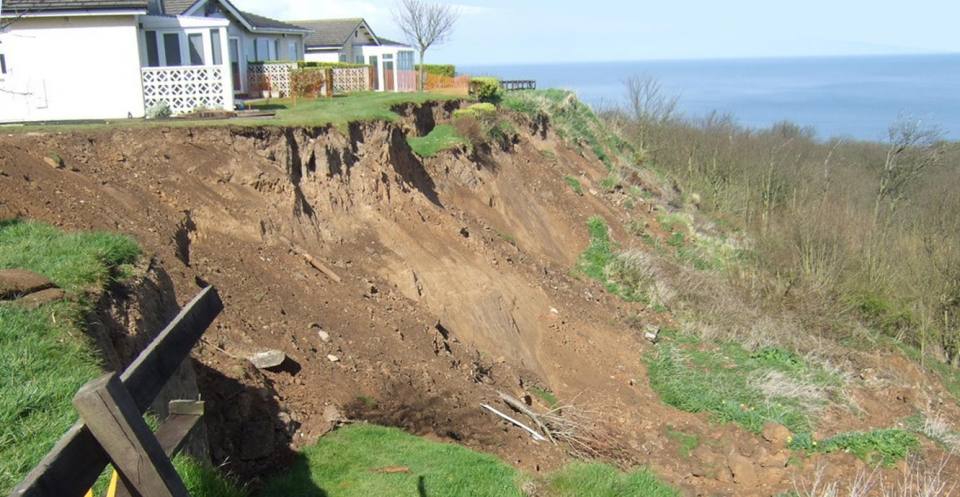
Landslide at Knipe Point, UK. The loose soil and rocks are sliding down the shore cliff because of gravitational erosion. BGS © UKRI.
Wind
When carrying dust and sand, the wind is a tremendous sculptor of the Earth. Not only does wind erode rock, it also carries away the sand and dust it creates in the process. Anything in the way of wind that is carrying sand and dust will be slowly weathered and eroded away. The sand slowly breaks up whatever surface it encounters, just like sandpaper, and then the wind blows the freed material to another location.
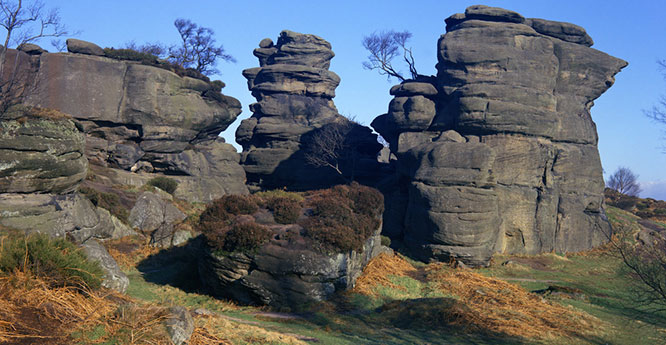
Brimham Rocks, North Yorkshire. These horizontally bedded sedimentary rocks show wind erosion. BGS © UKRI.
Rain
Rain works to erode the land on which it falls through rain-splash erosion, which is rain splashing down on the land and dislodging weathered material such as pebbles or soil. Heavy rainfall or large amounts of melting snow or ice can also carry away the sediment into streams and rivers. The rivers continue the process, carving watersheds where the land is steep and enriching floodplains where the land is flat.
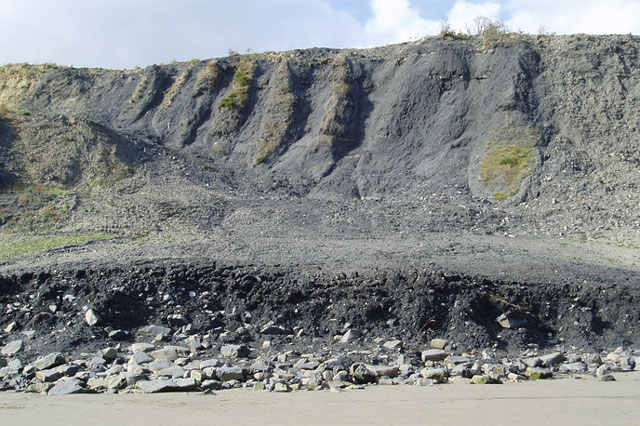
Rain gullies in Black Ven landslide, Lyme Regis, Dorset. BGS © UKRI.
Rivers
Rivers and streams weather and erode the Earth but they also build it up by depositing the material they erode downstream. The way in which it is deposited creates the typical shape of a meandering river. A river slowly winding its way through flat land flows a little bit faster on the outside riverbank than on the inside riverbank. This gives the water on the outside curve more power to weather the ground on that riverbank, extending and deepening the river in that direction. The slower water on the inside curve tends to deposit material carried by the river from the previous curves, adding material to the inside riverbank. In this way, a meander is expanded sideways, producing a deeper curve in the river.
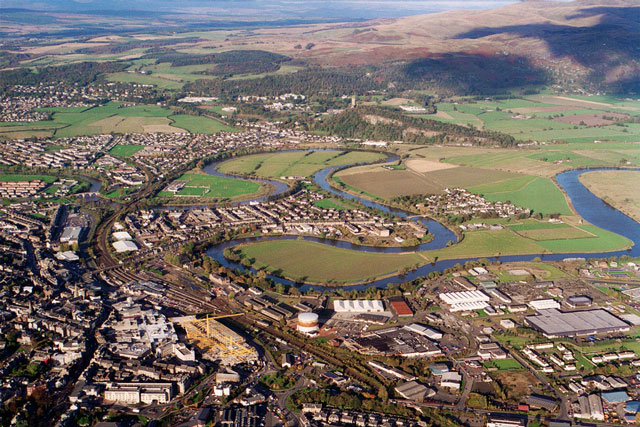
Aerial view of the meanders of the River Forth outside Stirling. BGS © UKRI.
Oceans
When the wind blows across the ocean, it creates waves that erode the loose sand on beaches. The repeated motion, often many times a minute, washes the beach sand back into the ocean. The rising and falling tides allow the waves to work on higher and lower elevations of the shore, removing material from different levels.
Oceans also erode the land with currents. As an ocean current moves past the shore, it picks up sand washed off the beach by the waves and sweeps it away, depositing it wherever the current slows down. The area with its beach washed away is left more vulnerable to wave action.
On the other hand, downstream areas that receive the sand from the currents are bolstered and protected from wave action. In this way, the shoreline evolves naturally
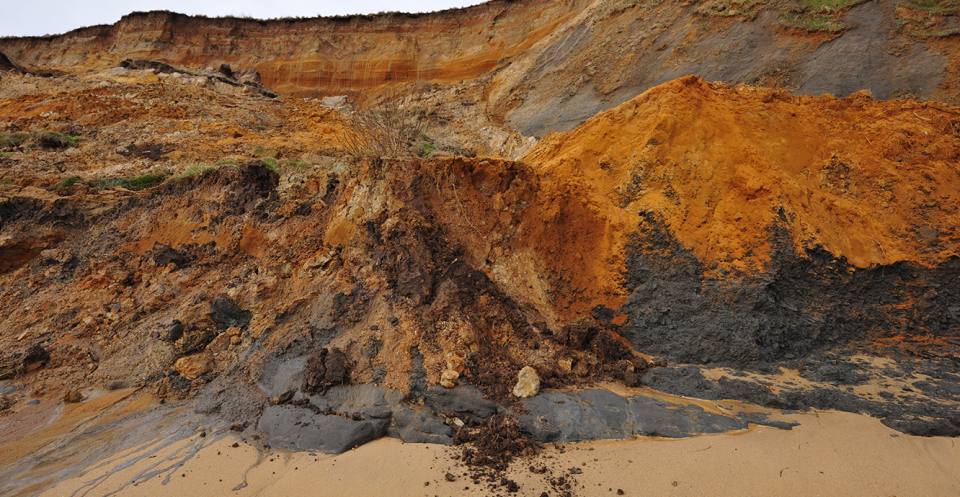
Coastal erosion at Newbiggin Cliff near Filey, North Yorkshire. The crashing of the waves loosens the rocks in the cliff face, making the land retreat. This sediment will eventually be picked up and redistributed by the sea. BGS © UKRI.
Glaciers
Glaciers are rivers of ice that flow very slowly. With their enormous size and weight, continental glaciers weather and erode significant portions of continents, while alpine (mountain) glaciers can weather and erode entire valleys. The enormous weight of the glacial ice and the embedded debris causes a glacier to weather the rocks beneath it as it flows, picking up still more debris along the way. As many glaciers in the world illustrate, the rock, sand and clay debris is then deposited at the tip of the glacier as the glacier breaks off or retreats.
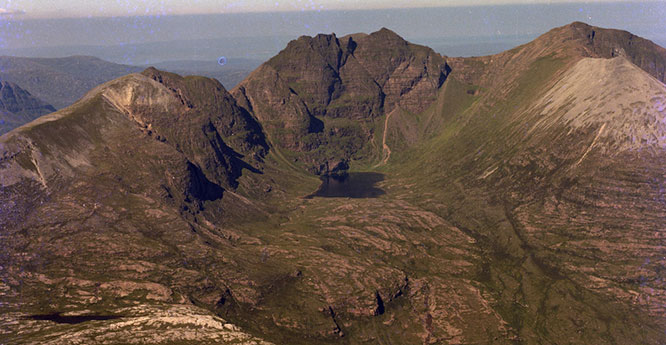
An Teallach, in Ross and Cromarty, is a mountain of Torridonian sandstone sculpted by glacial action. BGS © UKRI.
You may also be interested in
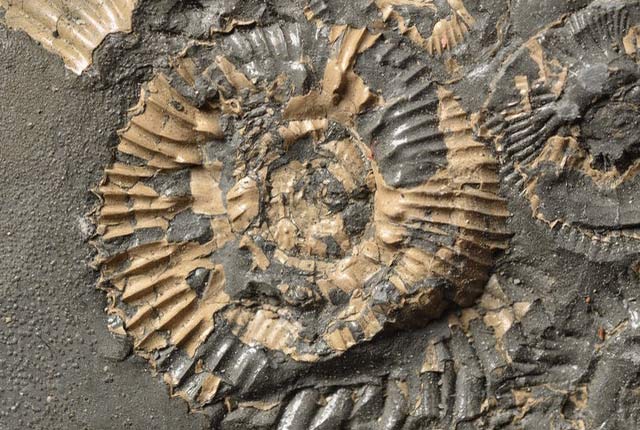
Discovering Geology
Discovering Geology introduces a range of geoscience topics to school-age students and learners of all ages.
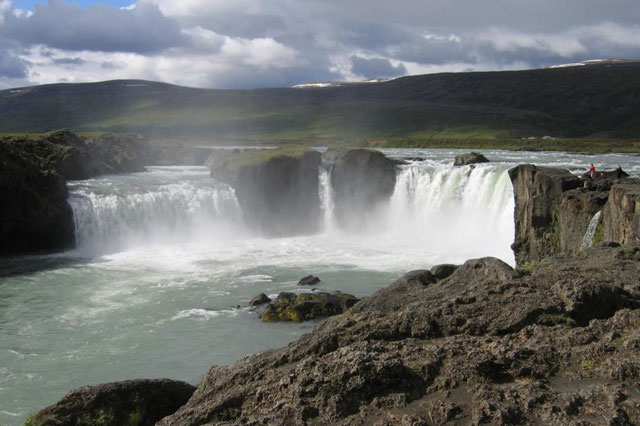
Geological processes
Planet Earth is dynamic with a surface that is always changing. Find out about the processes that cause these changes.
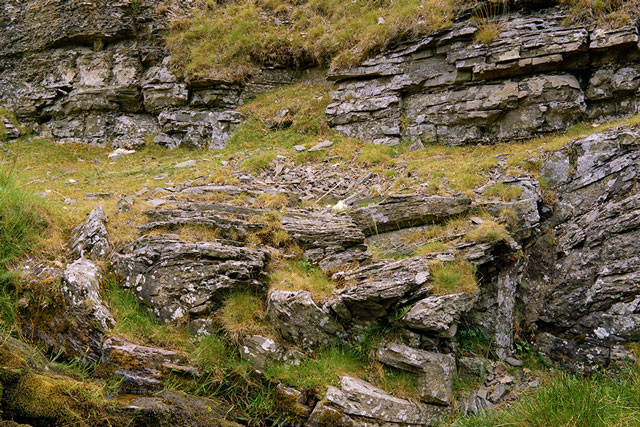
Weathering
Weathering is the wearing down or breaking of rocks while they are in place.
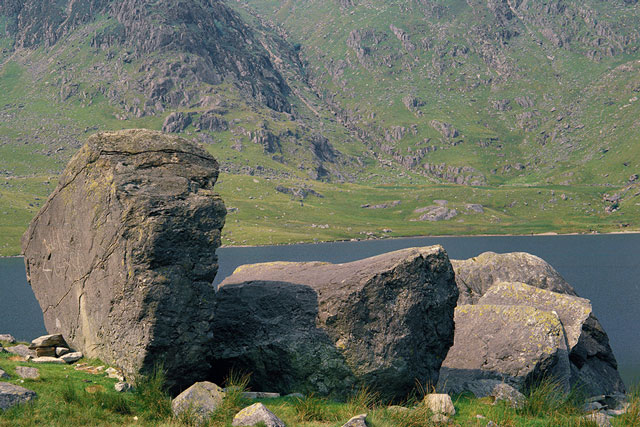
Deposition
Deposition is the laying down of sediment carried by wind, water, or ice.




